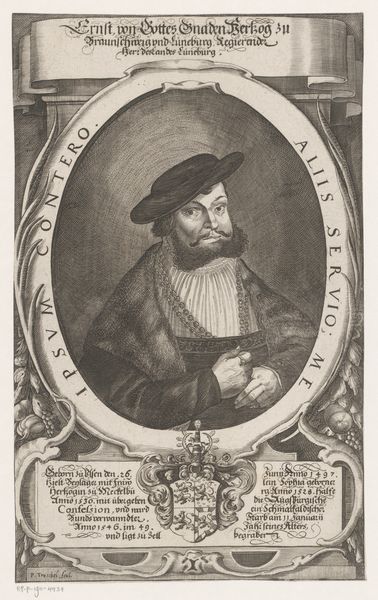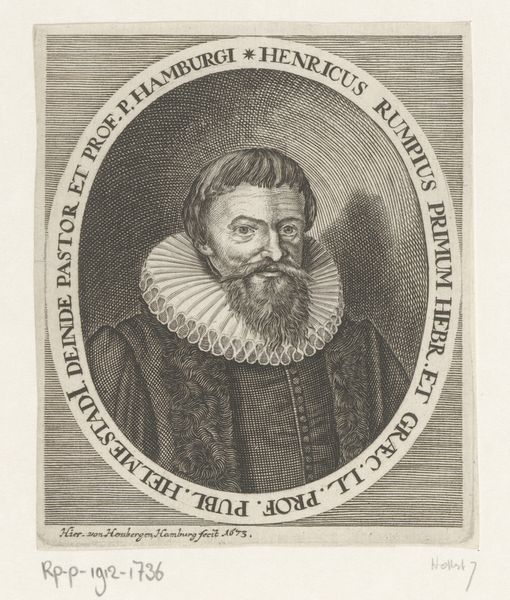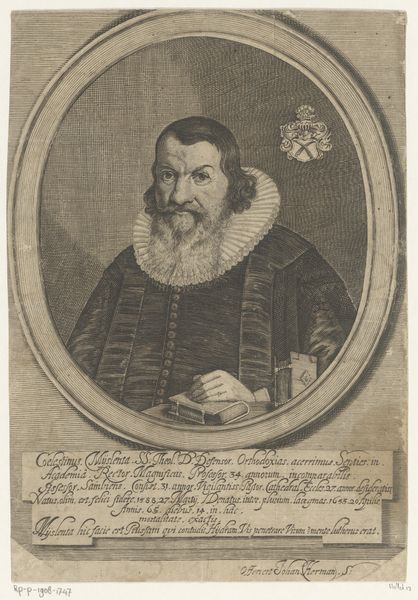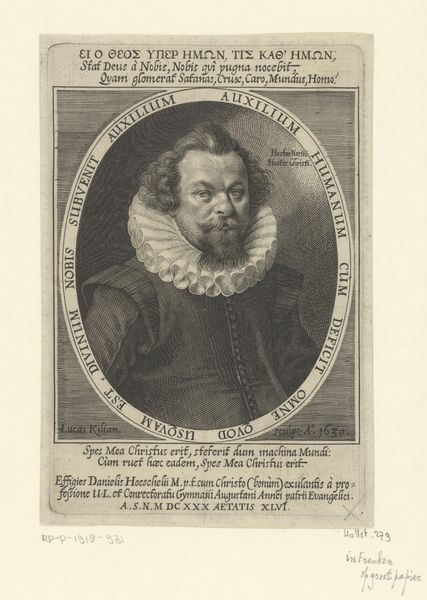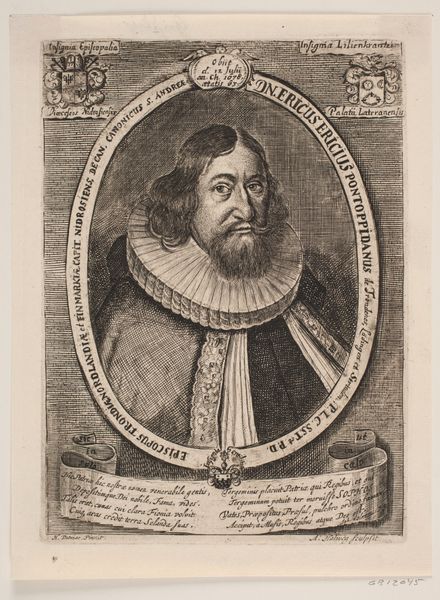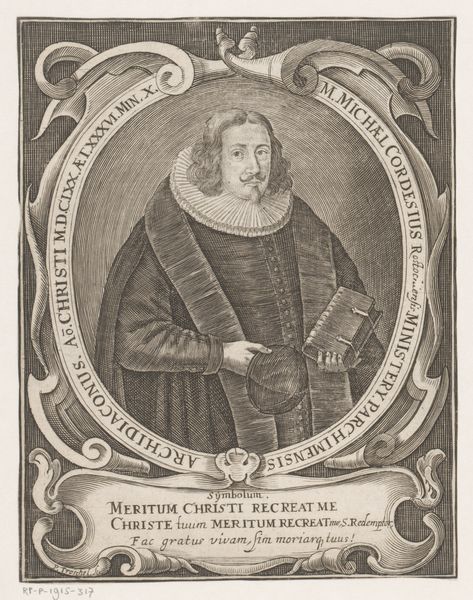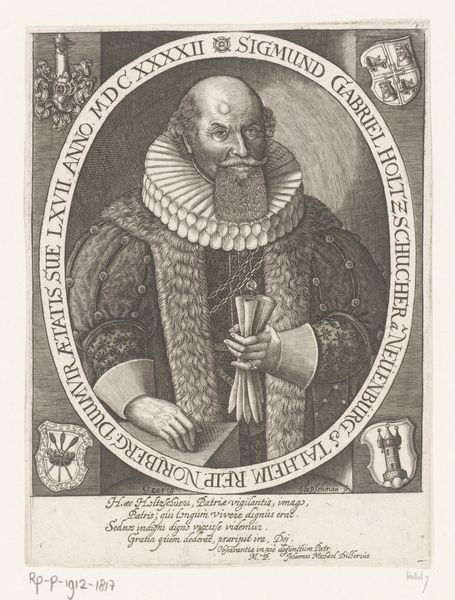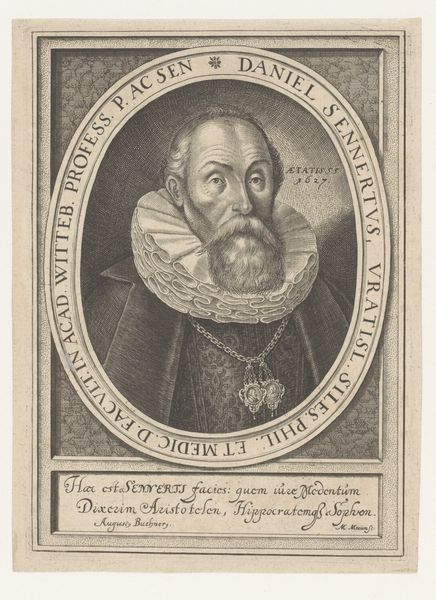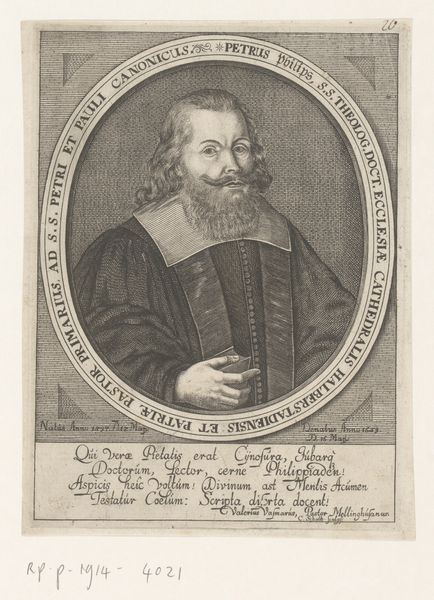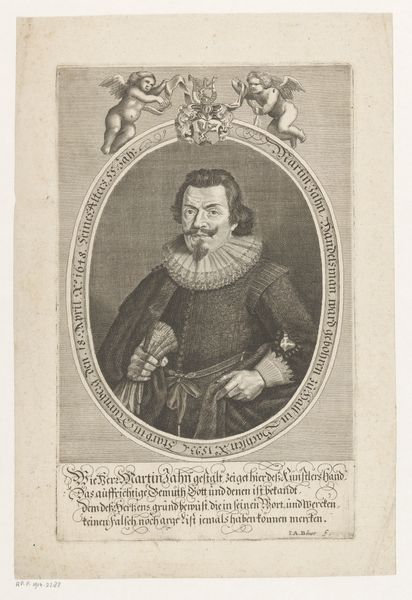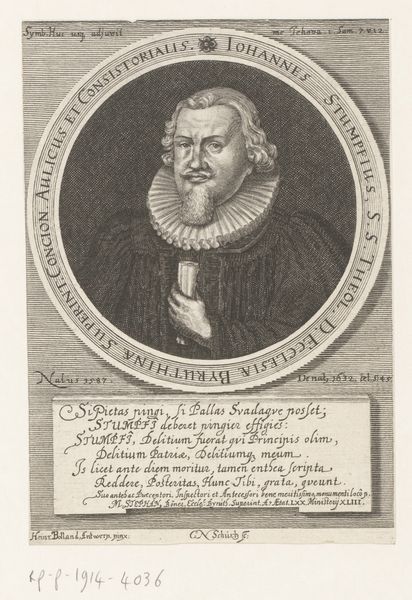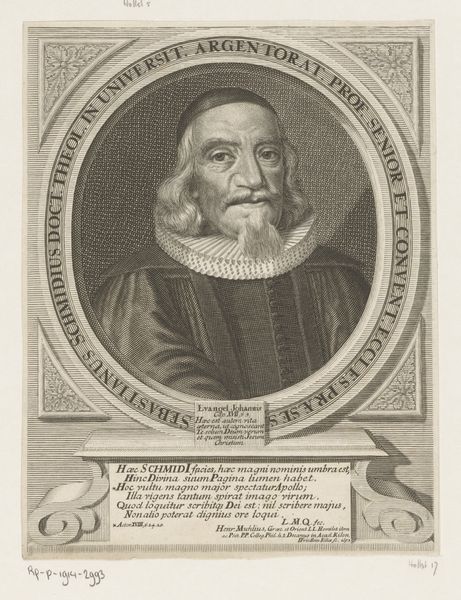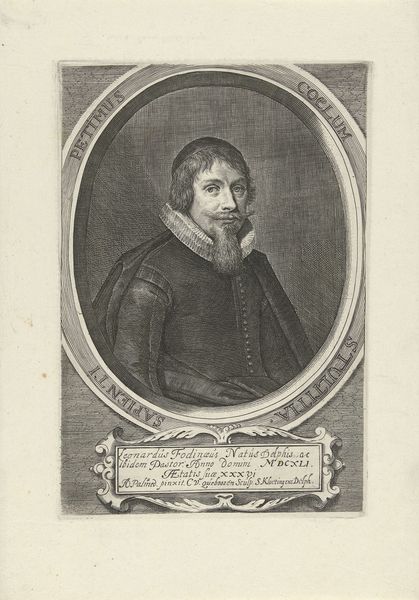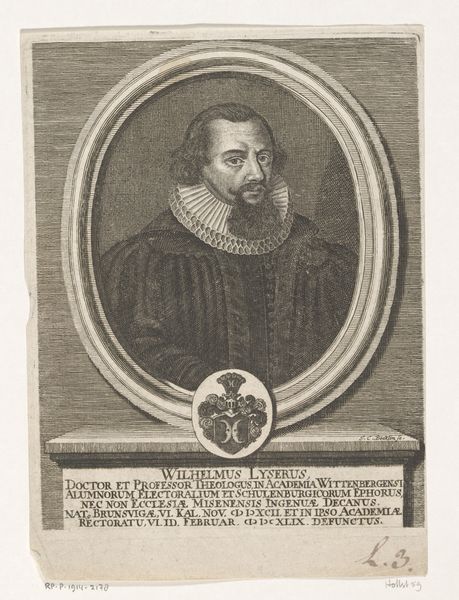
print, engraving
#
portrait
#
baroque
# print
#
history-painting
#
engraving
Dimensions: height 179 mm, width 129 mm
Copyright: Rijks Museum: Open Domain
Curator: Let's take a look at "Portret van Balthasar Balduin," a print made sometime after 1647 by Peter Troschel. Immediately, what stands out to you? Editor: The sheer amount of detail! It’s quite intricate. All those fine lines creating such a somber yet stately figure. And those swans, almost like heraldic supporters, though they seem a bit…stiff? Curator: This piece comes out of the Baroque period, where portraiture was so often used to reinforce status. Balthasar Balduin, framed by text, swans, and even a coat of arms, is certainly presented here in a position of authority. Look at how the composition reinforces this message of power. Editor: Absolutely. And I'm curious about the process. Creating this with engravings must have required so much skill. Notice the contrasting textures, from the fur trim on his robe to the delicate ruff at his neck. I wonder what kind of tools Troschel used, how he built up those dark, shadowed areas? Curator: Thinking about production, consider that prints like these served to disseminate images and ideas far more widely than painted portraits. Balduin's image could travel, reinforcing his position but also the values associated with his class and office, well beyond his physical presence. Editor: That's a crucial point about wider reach! These weren't luxury items accessible only to the elite. Though, while more accessible than paintings, acquiring something like this still represented a certain level of economic privilege. This print allowed a broader, though still select, segment of society to engage with depictions of authority. Curator: Precisely. Prints often played a role in constructing historical memory, both personal and collective. Think about how this print was meant to secure Balduin’s legacy in the cultural landscape. Editor: Thinking about it now, the material aspect also underscores a tension. We have this incredibly meticulous, almost handcrafted feel to the engraving, which circulated mechanically for wider consumption. It merges craft production with elements of early mass culture, really blurring those high/low distinctions. Curator: Yes, this single print encapsulates art as an object and as a historical actor. These pieces show us not just the what, but also the who, how, and, importantly, why of art’s role in shaping our world. Editor: Indeed, reflecting on its materiality allows us to look more closely at social impact and influence! It definitely makes this portrait more thought-provoking than simply admiring the sitter or its face value.
Comments
No comments
Be the first to comment and join the conversation on the ultimate creative platform.
